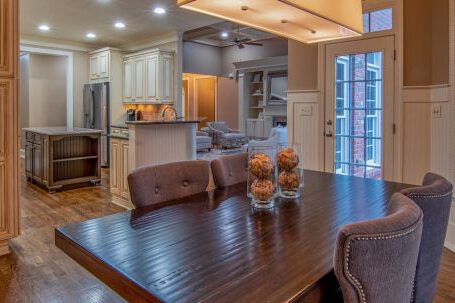Lighting plays a crucial role in creating the right ambiance in any room, and the living room is no exception. A well-lit living room can make a space feel warm, inviting, and comfortable, while also enhancing its functionality. To achieve the perfect lighting in your living room, it is essential to understand the concept of layering. Layering your lighting involves combining different types of lights and fixtures to create a harmonious and balanced lighting scheme. In this article, we will explore various techniques and tips on how to layer your living room lighting effectively.
Natural Light as the Foundation
Before we delve into artificial lighting options, it is important to consider the natural light available in your living room. Natural light not only provides a warm and inviting atmosphere but also offers numerous health benefits. Make the most of windows and skylights by keeping them unobstructed and using light-colored curtains or blinds that allow sunlight to filter through. Utilizing natural light as the foundation of your living room lighting helps create a seamless transition between daylight and artificial lighting.
Task Lighting for Functionality
Task lighting is an essential element in any living room, as it provides focused illumination for specific activities such as reading, working, or playing games. Place adjustable floor lamps beside reading chairs or desks to provide ample light without causing glare or shadows. Table lamps with adjustable heads can also be used for task lighting purposes. Consider the height and angle of your task lighting to ensure optimal lighting conditions for the intended activities.
Ambient Lighting for Overall Illumination
Ambient lighting serves as the primary source of light in a room, providing overall illumination and setting the mood. To achieve a well-balanced ambient lighting, consider using a combination of ceiling fixtures, recessed lights, or track lighting. Pendant lights or chandeliers can also be used to add a touch of elegance and style to your living room. Dimmer switches are a great addition as they allow you to adjust the intensity of the ambient lighting according to the desired mood or occasion.
Accent Lighting for Visual Interest
Accent lighting is an excellent way to highlight architectural features, artwork, or decorative elements in your living room. Use wall sconces or picture lights to draw attention to framed artwork or photographs. Install recessed lights or track lighting to create a dramatic effect on textured walls or shelves. Floor lamps with uplights can also be used to accentuate tall plants or sculptures. The key to effective accent lighting is to create contrast and depth, adding visual interest and focal points to your living room.
Layering with Decorative Lighting Fixtures
Decorative lighting fixtures, such as table lamps or floor lamps with unique designs, can add a touch of personality and style to your living room. Use these fixtures strategically to fill any gaps in your lighting scheme and create a cohesive look. Opt for lamps with shades that diffuse light softly, creating a warm and cozy atmosphere. Consider the scale and proportion of the fixtures to ensure they blend well with the overall design of your living room.
In conclusion,
Layering your living room lighting is an art that requires careful consideration of natural light, task lighting, ambient lighting, accent lighting, and decorative lighting fixtures. By incorporating these different lighting elements, you can create a well-balanced and visually appealing living room that suits your personal style and enhances the functionality of the space. Experiment with different combinations and intensities of light to find the perfect lighting scheme that transforms your living room into a welcoming and inviting sanctuary.





